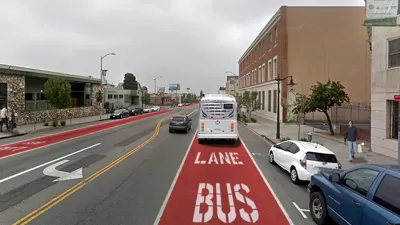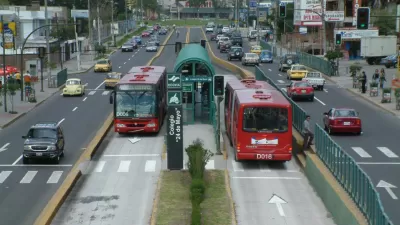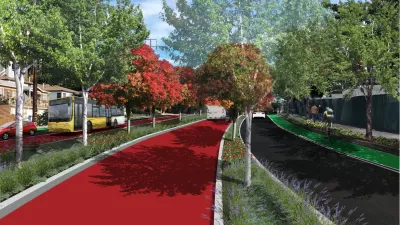In a landmark ruling issued last week, the Delhi High Court upheld the use of New Delhi's streets for a 5.6-kilometer bus rapid transit corridor, in a blow to auto owners seeking have it removed for use by all traffic, including private vehicles.
Dario Hidalgo and Madhav Pai report on the court's ruling, which "advanced the idea that transportation facilities are for moving people,
not cars, and should favor all users, not just the minority fortunate
enough to use private cars."
The suit had been brought by Nyaya Bhoomi, who claimed "that the bus corridor was aimed at harassing
commuters and was a waste of public money. It said it resulted in
increased travel time for car users and longer idling time due to
traffic jams, resulting in wastage of fuel."
According to Hidalgo and Pai, the judges, Pradeep Nandrajog and Manmohan Singh, "reasoned that since a bus could transport up to 200 persons in the
course of one journey, as opposed to a car, which would transport 3 or 4
persons, it was not irrational to assign dedicated road space for
buses."
The judges also noted that the city's growing traffic congestion is a result of the increasing number of private vehicles on the road, and asserted that the only way to reduce congestion would be to improve public transportation.
FULL STORY: A Developed Country Is One in Which Rich People Use Public Transport

Trump Administration Could Effectively End Housing Voucher Program
Federal officials are eyeing major cuts to the Section 8 program that helps millions of low-income households pay rent.

Planetizen Federal Action Tracker
A weekly monitor of how Trump’s orders and actions are impacting planners and planning in America.

Ken Jennings Launches Transit Web Series
The Jeopardy champ wants you to ride public transit.

Opinion: Transit Agencies Must View Service Cuts as Last Resort
Reducing service could cripple transit systems by pushing more riders to consider car ownership, making future recovery even less certain.

‘Smart Surfaces’ Policy Guide Offers Advice for Building and Maintaining Urban Tree Canopies
Healthy, robust tree canopies can reduce the impacts of extreme heat and improve air quality.

New Jersey Lawsuit Targets Rent-Setting Algorithms
The state of New Jersey is taking legal action against landlords and companies that engage in what the state’s Attorney General alleges is illegal rent fixing.
Urban Design for Planners 1: Software Tools
This six-course series explores essential urban design concepts using open source software and equips planners with the tools they need to participate fully in the urban design process.
Planning for Universal Design
Learn the tools for implementing Universal Design in planning regulations.
Heyer Gruel & Associates PA
Ada County Highway District
Institute for Housing and Urban Development Studies (IHS)
City of Grandview
Harvard GSD Executive Education
Toledo-Lucas County Plan Commissions
Salt Lake City
NYU Wagner Graduate School of Public Service





























